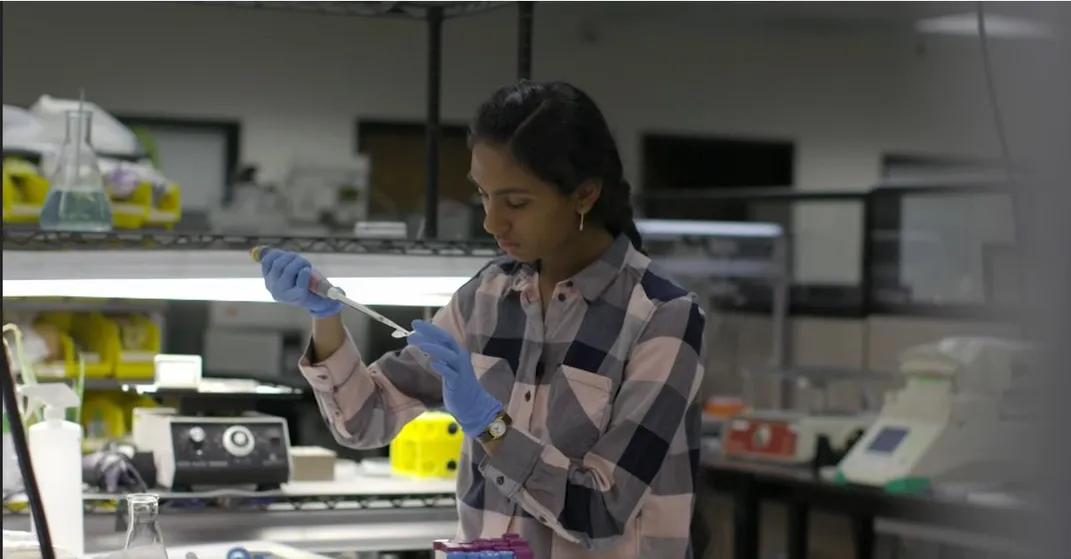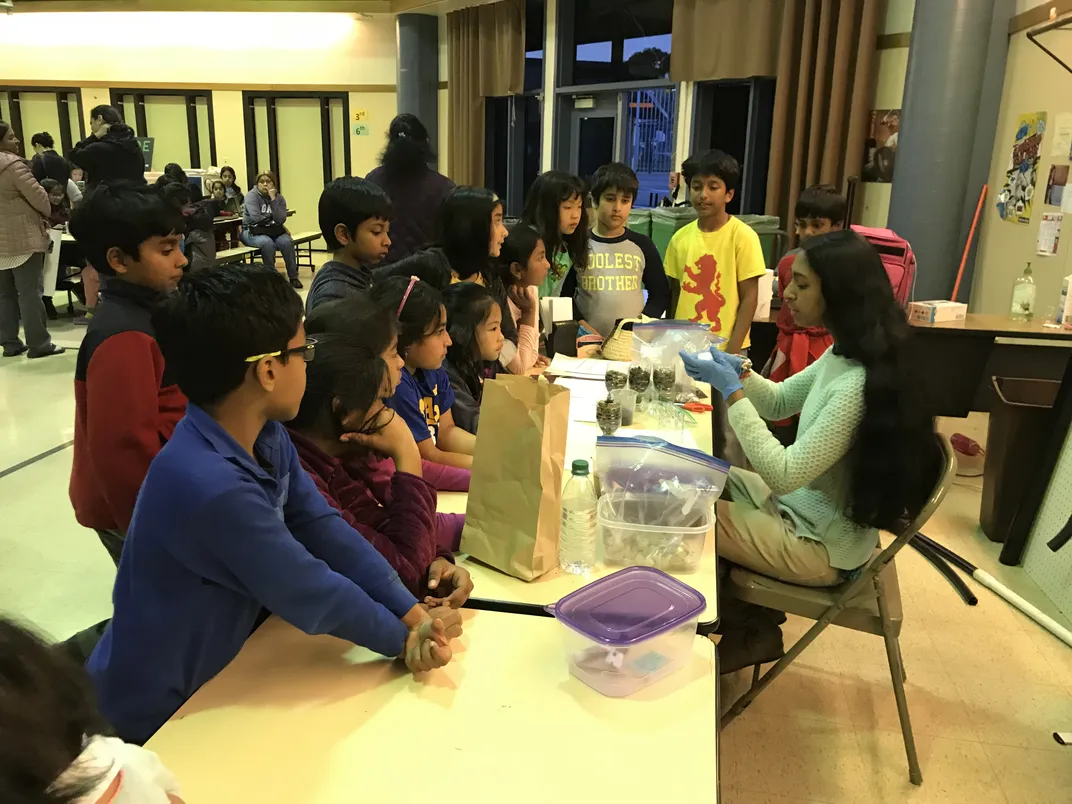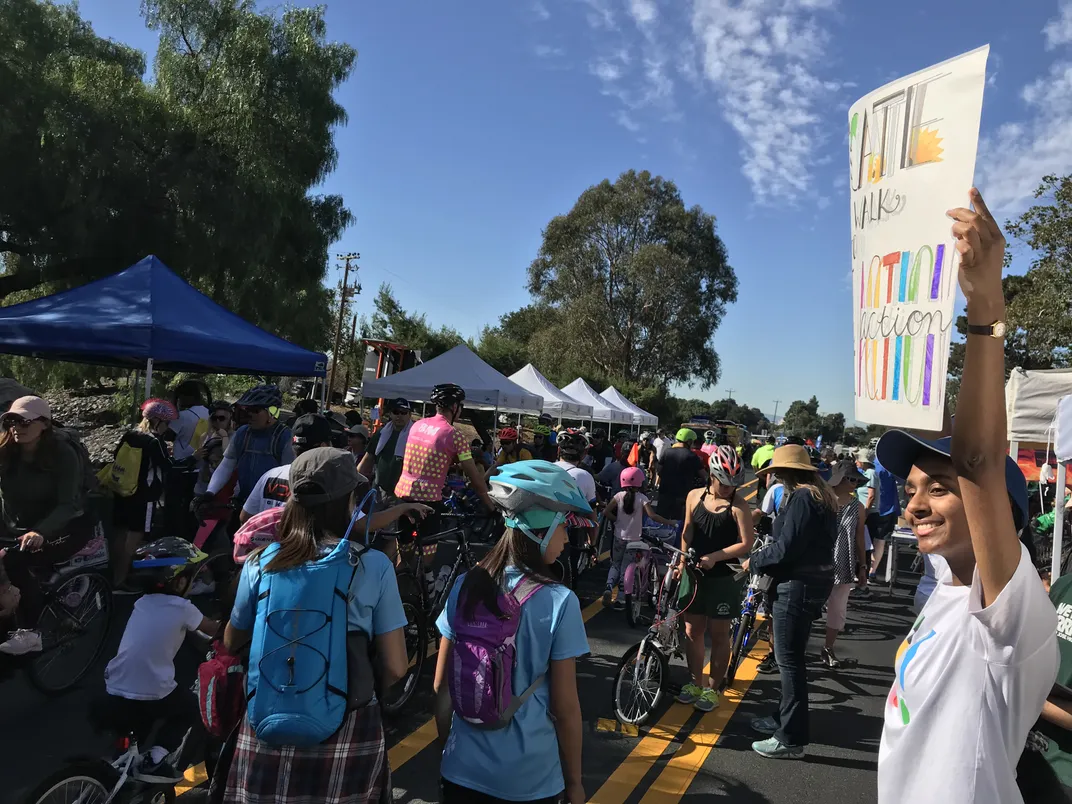Meet Shreya Ramachandran, Water Hero and Advocate
Author: Cat Kutz & Olivia Garcia
1
/https://tf-cmsv2-smithsonianmag-media.s3.amazonaws.com/blogging/featured/Shreya_Monterey_Pic2.JPG)
3 Water insecurity is an increasingly relevant issue for many people around the world and here in the U.S. as a result of our changing climate. Inspired by both droughts in California and water access in India, Shreya Ramachandran has made it her mission to tackle these problems through the use of grey water. In addition to conducting her own research, she has created her own nonprofit, The Grey Water Project, to educate and provide resources to diverse audiences on water recycling at home and in the workplace.
4 The Smithsonian Conservation Commons’ Cat Kutz and Olivia Garcia sat down virtually with Shreya to talk about her inspiring work and the need to get everyone involved in water conservation. Her interview is a part of an ongoing series spotlighting emerging leaders in conservation.
5 What first piqued your interest in water conservation?
6 So about five years ago now, California was at the peak of a really bad drought. And here, where I live in California, we had really strict water-saving measures that were in place. We couldn't water our lawns and there was a lot of community outreach about the drought that was happening, but it wasn't really affecting me personally. I was also quite young. So I wasn't really aware of the extent to which things had really progressed.
7 However, when I visited the county of Tulare, for an archery competition, I really saw firsthand the crippling effects of droughts. People's wells ran dry, leaving them completely waterless. They had to truck water in for even basic water needs like drinking and bathing. And that was shocking to me. I just didn't consider that this is something that could happen in the United States – something that could happen so close to my home. My family is originally from India and my grandparents live there. So when I visited India with my family, I actually met farmers in the southern part of the country where the monsoons had failed year after year. The land had just become so dry that it was unfarmable and people had to abandon ancestral villages and move to the cities in order to find whatever work they could.
8 It was through hearing these stories firsthand, talking to these people, and understanding their struggles that I realized what a truly global issue water scarcity is. It's different when you just read about it in a newspaper, or you see it as a news story versus actually hearing someone's story, hearing how water scarcity has just devastated their life. That was so shocking and really touching for me.
9 I was staying in an apartment in one of the largest cities in India, and sometimes when you turn to open the tap, the water would just run brown. I would be halfway through a shower and there would be no more water or the water would be really muddy. I would tell other people like, “Hey, this is happening,” and they would just hand me a bucket, and say, “Okay, so you get to stand in line for our water today.” So I would just go outside and we would collect water from a water tanker, and that was just normalized. No one really considered it to be an issue – that was really my starting point.
10 Then I came back home to the Bay Area, where you can open up the tap and you have clean drinking water. So I started implementing household water conservation measures. Some of those were just simple ones like taking shorter showers or turning off the tap or brushing your teeth, but I quickly realized that those were not going to create the large-scale water savings that I really wanted. I was looking to drastically reduce my household’s water use, and that's when I first found out about greywater.
11 What exactly is grey water and how can it be used?
12 Greywater is the lightly used water from sinks, showers, baths, laundries – it's basically like any water that's been used once in the home and can be used again. It makes up 60% of the used water in a home; recycling it could save 23 billion gallons of water every day. So it's a really great drought solution. If you can reuse grey water, then you're saving huge amounts of water by doing that. Grey water can be reused for things like landscape irrigation, toilet flushing, and other non-potable uses – there's a wide variety of things that it can be used for.
13 As I was looking into various ways to reuse grey water in a residential setting, I realized that many commercial laundry detergents and soaps actually have harmful chemicals in them that are detrimental to soil, plant, and aquatic life. That’s when my grandma visited me from India bearing soap nuts—a berry shell that releases soap in water—to wash my hair. Our best ideas are always in the shower. What started out as a curious experiment turned into a 5-year-long process of discovery and investigation to make sure that greywater reuse, especially reuse of grey water from soap nuts, is safe, effective and it will not negatively affect environmental health. I've found that grey water is a viable solution so as long as you aren't using detergents that have significant amounts of soluble salts or borax. There are also ways to include grey water reuse into areas outside of homes.

16 How do you get people to connect to this story and understand the importance of greywater if they live in a water-secure area?
17 It's definitely something that everyone should care about. In the United States, we are going to see negative climate effects that harm our water supply. We are going to see water shortages in several parts of the country, especially in parts of the country that are already drought-prone. But since we are such a large country, in some cases that might just mean that we switch our water supply or we might pipe water in from different places so people aren't as connected to their water sources as they might be in a smaller nation or a different area. I think one of the issues is that people aren't really connected with where their water comes from or their water supply at all because it's not something that people think about. I would really encourage people to understand that we have had the same amount of water on the planet since the time of the dinosaurs. That's really the basis of it. If we don't conserve water now, then we're not going to have enough for future generations. As the population grows more and more, people are going to have to share those same water resources.
18 So regardless of where you are, you should be caring about your water use and you should also care about the connection between water and climate change. Climate change is going to cause more severe weather patterns, cycling between drought and flooding – they're not opposite ends of a spectrum, they're more of a circle. So that's also an important thing to think about in terms of our water use.
19 Tell us more about your organization, The Grey Water Project.
20 So I was really excited to share my findings with others, and I wanted to tell people about grey water reuse and what a cool solution it could be. However, when I was talking to people, even in places like California that are heavily drought-prone, I realized that most people had never heard of greywater. Even if they had, they sort of viewed it as something dirty that they didn’t want to be associated with because it was akin to wastewater. People didn't want to engage in those sorts of conversations - they didn't want to even think about it. That was one of the primary reasons I founded The Grey Water Project. I promote the safer use of grey water and water conservation and encourage people to take action on this issue, work towards reducing their own water use, and understand how they can contribute to the global drought solution.
21 I started out by holding workshops and presentations in schools, libraries, community events, anywhere I could get the word out, talk about grey water reuse, and also explain to people how they can build laundry to lawn systems in their homes – which is a really simple type of grey water reuse system. For younger students, I would talk about how they can do simple water conservation actions in their own lives. From that I created the grey water curriculum, which is an NGSS-aligned STEM curriculum focused on grey water reuse, teaching students where their water comes from, how they're using it, and the connection between droughts and climate change, as well as other topics. It's been implemented by over 90 schools, and it's also part of PBS's curriculum group, Stanford Science in the City, EarthX, and several others.
22 The reason why I was really interested in educating young people is because, to me, water conservation and greywater reuse are comparable to paper or plastic recycling. In the same way that people taught us how to do recycling when I was in elementary and middle school. It just became something that we all knew how to do and it was something that was done – if you have a plastic water bottle or a piece of scrap paper, then the thing that you want to do then is to figure out how to recycle that material. I'm hoping that through the greywater curriculum we can have the same familiarity and ease with greywater recycling because they're really quite similar.

25 Why is it important to involve young people and how can they get started in your program?
26 I'm hoping that by educating young people, we can create a society-wide change because it really does take everyone. We need everyone to understand their water use. We need everyone to be doing water recycling in order to truly make an impact. So that's why I'm super excited about the greywater curriculum. It's also available for free to teachers and educators. There’s an online version and some really hands-on activities that can be done in the classroom, so it's very versatile.
27 In addition to that, I also run water conservation challenges. And the one thing that I'm also really excited to share is the climate ambassador program and the opportunity to become a chapter head for The Greywater Project. With the help of National Geographic as a Nat Geo Young Explorer, I'm going to be holding a climate leadership training for young people under the age of 21, teaching them climate leadership skills and organizing skills, and also the science behind various climate change problems. It will give young people the tools that they need to go out and make a difference and also do impact projects in their own communities, and also opportunities to network with other people who are interested in this space and really make a difference.
28 If other young people want to get involved, I would encourage them to join the climate ambassador program. It would be a really excellent climate leadership training for anyone who is interested in getting involved. Students can also start a chapter of The Grey Water Project locally and also volunteer. Please contact me through my webpage.
29 How are you encouraging sustainability in your local community?
30 I'm the youth representative on my city’s Environmental Sustainability Commission. We are working on updating the city’s climate action plan – essentially an environmental roadmap for the next few years. We are essentially setting targets for greenhouse gas emissions reduction, as well as the steps that we as a city want to take to get there.

33 Who are some changemakers in conservation or other fields that inspire your work?
34 More than any one person, I am inspired by the global movement of people for water and sustainability. I believe in the power of individual action. It’s very easy to think that the actions of one individual will not make a difference because you are just one person among millions. Of course, industry and governments are major players, but everyone needs to be a part of the water solution. It’s small actions taken in concert by thousands of people that can really make a difference and create change. Therefore, I am inspired by the ordinary citizens who are willing to get involved, people changing their everyday habits to become more sustainable, and my fellow youth at the forefront of the climate movement. I hope that through my work, I can serve as an inspiration for others as well.
35 What gives you optimism for the future of our planet?
36 We have the solutions - for water scarcity, renewable energy, and more. Scientists have developed the tools and methodologies that we need to tackle this global challenge. I am optimistic because I can see a path forward to a greener future. It will be difficult - implementation is never easy - but it is doable. I’m excited to be part of the solution.





0 General Document comments
5 Sentence and Paragraph comments
0 Image and Video comments
and so it makes sense to look at all of the solutions found by people who’ve already experienced water shortages
New Conversation
Hide Full Comment
New Conversation
Soap nuts have been around for a long time. I like how it’s the grandma from India who provides the breakthrough
New Conversation
Hide Full Comment
New Conversation
Nice short video feature on her here:https://utah.pbslearningmedia.org/resource/greywater-recycling-video/power-of-us/
New Conversation
Hide Full Comment
General Document Comments 0

